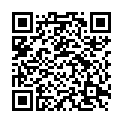|
|
|
| Module code: E2401 |
|
|
3V+1U+2P (6 hours per week) |
|
7 |
| Semester: 4 |
| Mandatory course: yes |
Language of instruction:
German |
Assessment:
Written exam (67%), practical examination with composition (6 lab experiments, 33%)
[updated 05.07.2021]
|
E2401 (P211-0086, P211-0087) Electrical Engineering and Information Technology, Bachelor, ASPO 01.10.2018
, semester 4, mandatory course, technical
|
90 class hours (= 67.5 clock hours) over a 15-week period.
The total student study time is 210 hours (equivalent to 7 ECTS credits).
There are therefore 142.5 hours available for class preparation and follow-up work and exam preparation.
|
Recommended prerequisites (modules):
None.
|
Recommended as prerequisite for:
E2610 Integration-Compatible Circuitry
[updated 07.02.2021]
|
Module coordinator:
Prof. Dr. Xiaoying Wang |
Lecturer: Prof. Dr. Xiaoying Wang
[updated 10.09.2018]
|
Learning outcomes:
After successfully completing this module, students will be able to explain the difference between ideal and real operational amplifiers and list areas of use and applications. They will be able to calculate frequency responses and transfer characteristics of operational amplifier circuits as well as analyze the stability of the entire circuit. Students will be able to explain the main electrical specifications of an operational amplifier and select the appropriate component for specific applications. They will understand the operating principle of field-effect transistors, be able to distinguish between the various basic types, and name and explain typical characteristics and applications.
Students will work together in small groups during the practical part of the module. They will become familiar with the typical measuring equipment used in an electronics laboratory and how the equipment operates. They will evaluate the measurement results obtained during experimentation according to various criteria and present the results in suitable form and with commentary in short papers.
[updated 05.07.2021]
|
Module content:
- The operational amplifier as a component: Terms and definitions, ideal and real OP, non-inverting and inverting amplifiers, impedance converter, active filters, comparator, Schmitt trigger.
- Internal circuitry of the OP with input stage, amplifier stage and output stage
- Specifications of an OP: large signal voltage gain, CMRR, PSRR, slew rate, GBP
- Stability analysis: open-loop gain, closed-loop gain, loop gain, Bode plot, phase reserve
- MOSFET: structure and operation, operating point setting, operating range, small-signal equivalent circuit, switches
- Circuit technology for logic circuits: RTL, DTL, TTL, CMOS
- Digital technology: propagation delay, fan-out, gate, transmission gate, latch, flip-flop
- Practical experiments: diodes, basic transistor circuits, operational amplifiers
[updated 05.07.2021]
|
Teaching methods/Media:
PPT slides, templates and assignment sheets in electronic form, instructions for the practical part of the module.
[updated 05.07.2021]
|
Recommended or required reading:
U. Tietze, C. Schenk, Halbleiterschaltungstechnik, Springer, (akt. Aufl.)
B. Razavi, Fundamentals of Microelectronics, Wiley, 3rd Edition, Apr. 2021, ISBN: 978-1119694397
B. Razavi, Design Of Analog Cmos Integrated Circuit, 2nd Edition, Okt. 2017, ISBN: 978-9325983274
[updated 05.07.2021]
|


